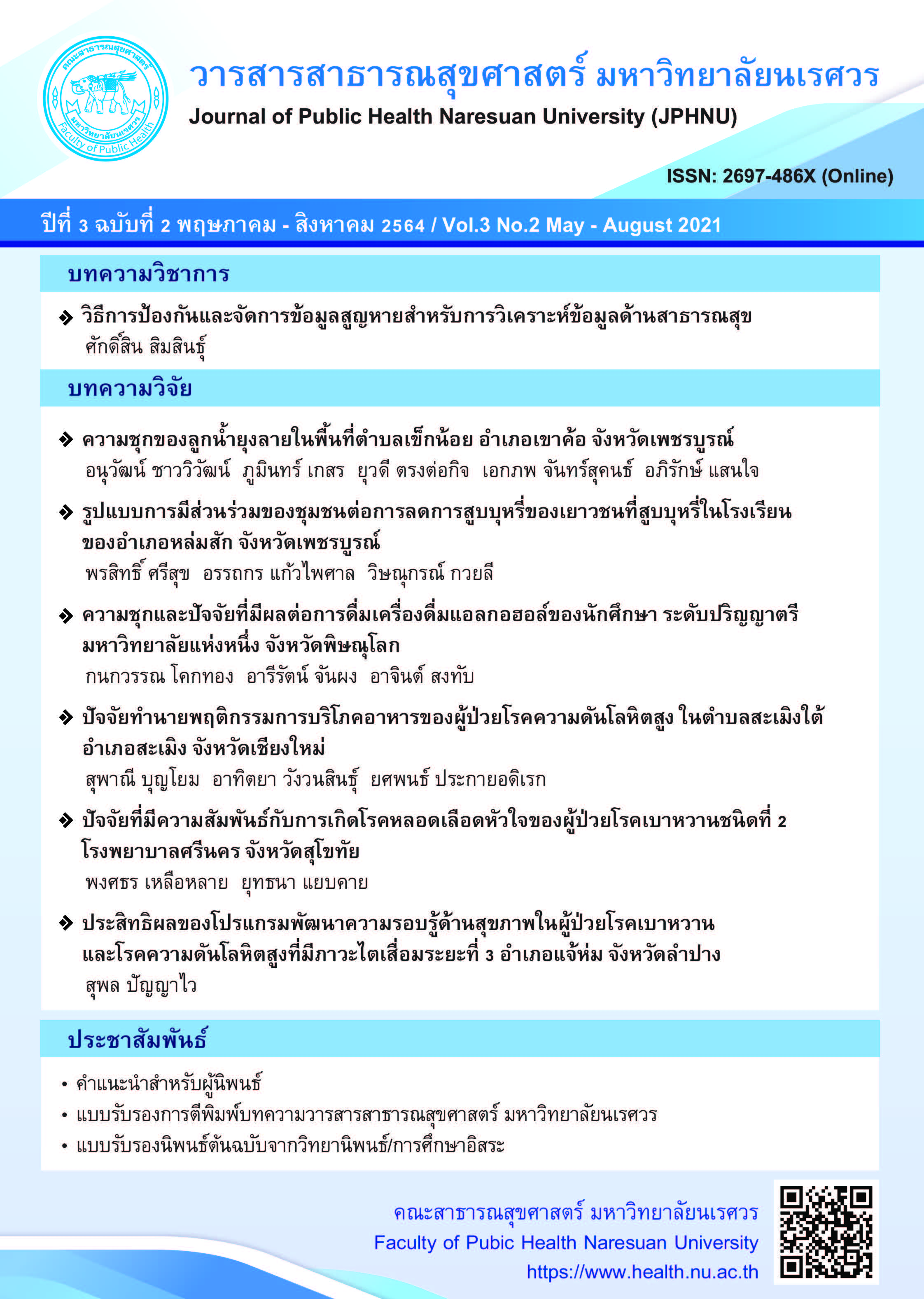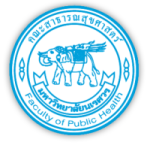The method of the prevention and handling of missing data for analysis of public health data
Keywords:
Handling of missing data, Missing data, Imputation of missing dataAbstract
Missing data is the trouble that can be encountered in all research. It can reduce the sample size and ability to represent the sample, leading to bias in parameter estimation. For statistical hypothesis testing, it can cause decreasing the power of the test and increasing type 1 error.
The neglected, as well as improper handling of missing data, can lead to invalid conclusions. The severity of the impact depended on the size and the type of missing data. The best solution to this problem was to design the research protocol. However, in practice, it was difficult to control. Therefore, when missing data occur in the data set, selecting an appropriate statistical method for managing the data can help mitigate the problem. In the present, there is an increasing discussion about how to handle missing data, but there has not been much change in practice. Miscomprehension, and improperly selecting handle methods also found. Therefore, handling missing data is important. This article reviews the causes, types and techniques for handling missing data. This information could be used as a guide for researchers in the handling of missing data in the dataset.
References
Bennett, D. A. (2001). How can I deal with missing data in my study?. Australian and New Zealand journal of public health, 25(5), 464-469.
Dong, Y., & Peng, C. Y. (2013). Principled missing data methods for researchers. Springer Plus, 2(1), 222. https://doi.org/10.1186/2193-1801-2-222
Dziura, J. D., Post, L. A., Zhao, Q., Fu, Z., & Peduzzi, P. (2013). Strategies for dealing with missing data in clinical trials: From design to analysis. The Yale Journal of Biology and Medicine, 86(3), 343-358.
Fielding, S., Fayers, P. M., Loge, J. H., Jordhoy, M. S., & Kaasa, S. (2006). Methods for handling missing data in palliative care research. Palliative Medicine, 20(8), 791-798.
Haukoos, J. S., & Newgard, C. D. (2007). Advanced statistics: Missing data in clinical research part 1: An introduction and conceptual framework. Academic Emergency Medicine: Official Journal of the Society for Academic Emergency Medicine, 14(7), 662-668.
Jakobsen, J. C., Gluud, C., Wetterslev, J., & Winkel, P. (2017). When and how should multiple imputation be used for handling Missing data in randomised clinical trials-a practical guide with flowcharts. BMC Medical Research Methodology, 17(1), 162. https://doi.org/10.1186/s12874-017-0442-1
Kang, H. (2013). The prevention and handling of the missing data. Korean Journal of Anesthesiology, 64(5), 402-406.
Karahalios, A., Baglietto, L., Carlin, J. B., English, D. R., & Simpson, J. A. (2012). A review of the reporting and handling of missing data in cohort studies with repeated assessment of exposure measures. BMC Medical Research Methodology, 12, 96. https://doi.org/10.1186/1471-2288-12-96
Pedersen, A. B., Mikkelsen, E. M., Cronin-Fenton, D., Kristensen, N. R., Pham, T. M., Pedersen, L., et al. (2017). Missing data and multiple imputation in clinical epidemiological research. Clinical Epidemiology, 9, 157-166.
Prasitwattanaseree, P., & Prasitwattanaseree, S. (2009). Missing data and management. Data Management and Biostatistics Journal, 4(3), 52-61. (in Thai)
Sookcharoen, W. (2015). Dealing with missing data. Romphruek Journal, 33(2), 11-32. (in Thai)
Srisuttiyakorn, S. (2014). Missing data analysis. Journal of Education Studies, 42(1), 207-223. (in Thai)
Sterne, J. A., White, I. R., Carlin, J. B., Spratt, M., Royston, P., Kenward, M. G., et al. (2009). Multiple imputation for missing data in epidemiological and clinical research: Potential and pitfalls. BMJ, 338, b2393. https://doi.org/10.1136/bmj.b2393
Suwannasaen, P. (2018). Management approach of missing data: K-Nearest neighbor imputation. Science and Technology Research Journal Nakhon Ratchasima Rajabhat University, 4(1), 1-9. (in Thai)
Wisniewski, S. R., Leon, A. C., Otto, M. W., & Trivedi, M. H. (2006). Prevention of missing data in clinical research studies. Biological Psychiatry, 59(11), 997-1000
Downloads
Published
How to Cite
Issue
Section
License
Copyright (c) 2021 Journal of Public Health Naresuan University

This work is licensed under a Creative Commons Attribution-NonCommercial-NoDerivatives 4.0 International License.
The published article is copyrighted by the Journal of Public Health and Health Sciences Research.
The statements that appear in each article in this academic and research journal are the personal opinions of each author and are not related to Naresuan University and other faculty members in the university. Responsibilities regarding each article are the responsibility of each author.






